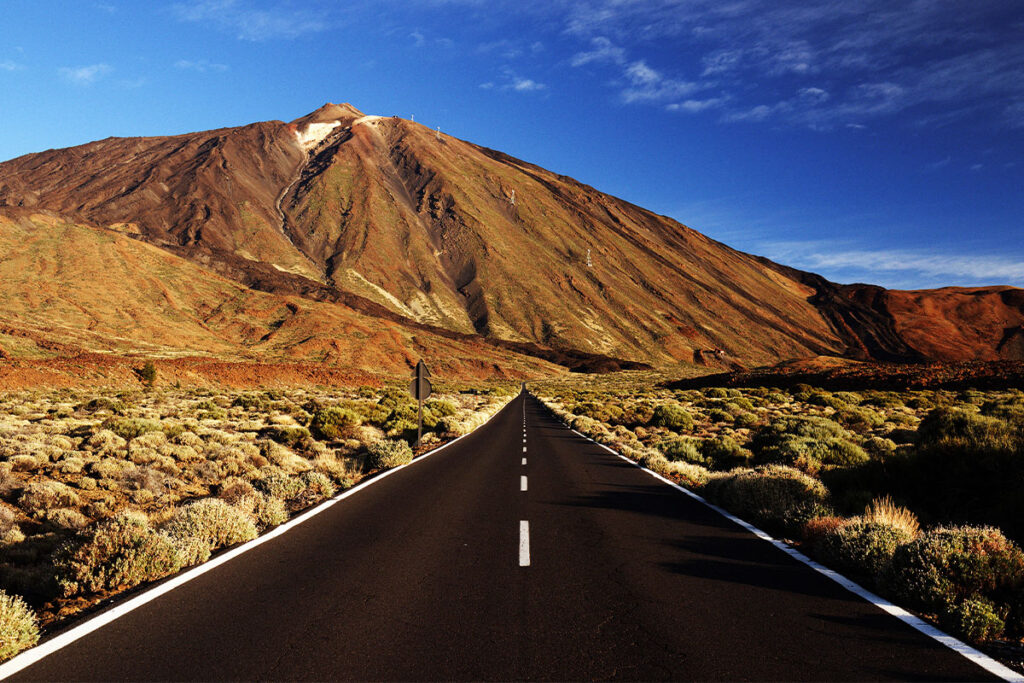On the way to the top of Teide volcano, many people forget that the area around it is equally interesting. To appreciate them even better, learn a little more about them.
Teide National Park (Parque Nacional del Teide) in Tenerife is one of several national parks in Spain. It is an emblematic place not only because of the beautiful volcanic landscape, unusual rock formations and fauna and flora.
Teide National Park is also home to Spain’s highest peak – still active (though dormant) Teide volcano, 3718 meters above sea level. This symbol of both Tenerife and the entire Canary Islands causes as much admiration as terror (one of the eruptions in 1706 severely destroyed the nearby town of Garachico).
Nevertheless, few fear to climb the highest peak in Spain. This endeavor is made easier by the Teleférico del Teide cable car which takes tourists almost to the very top of the volcano. There are many people there, so to save time, it is worth buying a ticket online. And if you are going to the very top of the crater (El Pico del Teide), you will need a permit. Here you will find information on how to get it.
History of Teide National Park
Teide volcano is the heart of Tenerife. In fact, its eruptions led to the formation of this island about 150,000 years ago. According to volcanologists, its height was then much higher, and subsequent eruptions caused it to shrink and widen the island’s slope giving it the shape we that know it today. The Phoenicians knew about the existence of the Teide volcano. The indigenous people of Tenerife (Guanches) called it hell. Christopher Columbus also wrote about it, when in 1492, while going to America, he saw lava erupting from the crater.
However, it was not until the 18th century that attempts were made to describe the flora of the areas surrounding the Teide volcano. This was done by Alexander von Humboldt in 1724. The astronomer Charles Piazzi Smyth, who observed the local skies in the mid- nineteenth century, also contributed to the development of knowledge about these areas.

The biggest breakthrough came in 1954. It was then that the Teide National Park was created here. The pastures which existed here before were liquidated (some of them were used here since the colonization of the island) and the whole area was given special protection, which was to prevent the devastation of these naturally beautiful areas.
The next turning point came in 1964, when the first telescope was set up in the park. It announced the establishment of one of the most important Institutes of Astrophysics in the world here. A few decades later, in 2007, Teide National Park was inscribed on the UNESCO World Heritage List, which finally sealed the enormous natural importance that this area has for our civilization.
Teide Astronomical Observatory
The Teide Observatory gave rise to the development of astrophysics in the Canary Islands. Few people know that it is one of the top three places on Earth to observe the sky. The activity of the observatory is mainly focused on studying the Sun (it is the largest solar observatory in the world). One of the significant discoveries was that the Sun has a frequency of its own which makes the Sun vibrate every 5 minutes and resembles a heartbeat. The first brown dwarf, named Teide-1, was also discovered at the Teide Observatory in 1995.
The telescopes in the observatory belong to different countries. However, due to the fact that the whole area belongs to Spain, Spanish scientists are privileged to use all of them (under appropriate agreements, they can use telescopes for a certain amount of time).
The good news is that the Teide Observatory is partially open to tourists. A solid dose of astrophysical knowledge awaits you during your guided visit, as well as the opportunity to observe the Sun and solar processes. Such a guided tour online is worth buying tickets for!
Practical information
It is best to buy tickets for the cable car, guided tours and the Astrophysical Observatory online in advance. You will then avoid standing in a long queue and avoid the risk that all tickets have been sold out.
